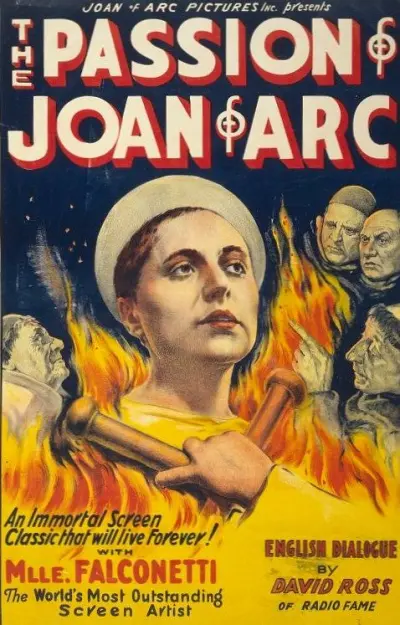
"La Passion de Jeanne d'Arc" (The Passion of Joan of Arc), a 1928 cinematic masterpiece, stands as a deeply stirring portrayal of the trial and execution of Joan of Arc, a revered French heroine of the Hundred Years' War. This silent historical film, directed by the esteemed Carl Theodor Dreyer, is celebrated for its unflinching depiction of Joan's ordeal and its pioneering cinematographic methods. The film poignantly chronicles the final chapter in Joan of Arc's life, encapsulating her trial for heresy and subsequent martyrdom.
The film's narrative is firmly anchored in historical authenticity, focusing particularly on the events of May 30, 1431. Renée Jeanne Falconetti's portrayal of Joan of Arc is widely lauded for its profound emotional resonance and intensity. In the film, Joan is subjected to rigorous interrogation by a French clerical court, aligned with the Burgundian-English coalition, which seeks to undermine her claim of divine guidance in her mission to expel the English from France. Despite their relentless efforts, Joan's faith and conviction in her divine purpose remain unshakable.
In their quest to break Joan's spirit, the court employs a range of manipulative tactics. A particularly memorable scene involves a priest deceitfully reading a fabricated letter to the illiterate Joan, purportedly from King Charles VII of France, coaxing her to trust its bearer. This act of deception, along with the intimidating display of the torture chamber, fails to deter Joan. Under the threat of being burned at the stake, she is momentarily coerced into signing a confession. However, this act of submission is fleeting, as she soon renounces her confession, realizing her disloyalty to her divine calling.
The film reaches its poignant climax with Joan's execution. As her unwavering faith becomes apparent to all, she is granted a final communion before her execution at the stake. In a remarkable testament to her courage and conviction, Joan assists the executioner in securing her to the stake. The execution scene is emotionally charged, capturing the moment's intense pathos as the crowd witnesses the unjust execution of a figure they come to recognize as saintly. A man's outcry from the crowd, "vous avez brûlé une sainte" ("you have burned a saint"), underscores the profound tragedy of her martyrdom. The film concludes with a subtitle suggesting that the flames shield Joan's soul as it ascends to Heaven.
"La Passion de Jeanne d'Arc" transcends the boundaries of a mere historical recount of Joan of Arc's trial and martyrdom. It delves deeply into the exploration of faith, truth, and the resilience of the human spirit under extreme adversity. The film's minimalist style, characterized by the absence of elaborate sets and a focus on close-up shots, directs the audience's attention to the expressive faces of the characters, especially Joan's, thereby conveying the narrative's emotional depth. This stylistic choice, coupled with Falconetti's mesmerizing performance, cements the film as a seminal work in cinematic history, esteemed for its artistic innovation and profound emotional impact.

